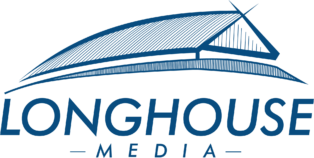On-page SEO is optimizing individual web pages to rank higher and earn more relevant traffic in search engines. It involves optimizing a page’s content and HTML source code to improve its relevance, readability, and user experience.
While optimizing on-page elements for search engines is essential, ensuring that these elements appear seamless and natural for users is equally important. Let us discuss on-page SEO practices that should appear natural and user-friendly for your website visitors.
1. Keywords in Titles and Meta Descriptions
One of the most basic on-page SEO practices is including your target keywords in your web pages’ titles and meta descriptions. However, ensuring that the titles and descriptions are descriptive and engaging for users is essential.
The title and meta description should accurately reflect the content on the page and entice users to click through to your website. Avoid stuffing your keywords into the title or description; this can appear spammy and turn off potential visitors.
2. Short But Descriptive URL
Another important on-page SEO practice is creating short but descriptive URLs for your web pages. A URL that is too long or contains random numbers and characters can appear confusing and unprofessional. Instead, aim to use a URL structure that is easy to read and understand.
Include your target keyword in the URL if possible, but don’t sacrifice readability for cramming in your keywords. Therefore, only add links to keywords where it seems natural. Look for areas in the post where adding a link seems helpful to ensure authenticity.
3. Alt Text in Images
Images are a great way to enhance the user experience on your website, but they can also be a missed opportunity for on-page SEO. Adding alt text to your images can provide additional context and keywords to search engines and users.
Alt text is a short description of the image that appears when the image cannot be displayed. Ensure your alt text accurately describes the image and includes relevant keywords where appropriate.
4. Anchor Text in Internal Links
Internal links are links within your website that lead to other pages on your site. These links can improve the user experience by providing additional information and context, but they can also help search engines understand the structure and hierarchy of your website.
When creating internal links, use anchor text that accurately describes the page you are linking to. Avoid using generic phrases like “click here” or “read more,” as these can confuse users and search engines.
5. Appropriate Schema Markup
Schema markup is a type of microdata that helps search engines understand the content and structure of your website. Adding schema markup to your pages can provide additional context and information to improve your search engine rankings and click-through rates.
However, appropriate schema markup relevant to your content and user experience is essential. Don’t add schema markup to improve your SEO; this can appear spammy and harm your rankings.
Conclusion
On-page SEO is integral to any digital marketing strategy, but ensuring these practices appear seamless and natural for users is equally important. By incorporating keywords into titles and descriptions, creating short and descriptive URLs, adding alt text to images, using appropriate anchor text in internal links, and implementing relevant schema markup, you can improve your search engine rankings and provide a better user experience for your website visitors. Remember that SEO is about ranking higher in search engines and providing value and relevance to your target audience.
Looking for professional media services in Canada? Longhouse Media has got you covered! Our expert team provides various media services, including web design, SEO, social media management, video production, Facebook advertising, and more. Contact us today to learn how we can help you achieve your media goals through search engine optimization.





